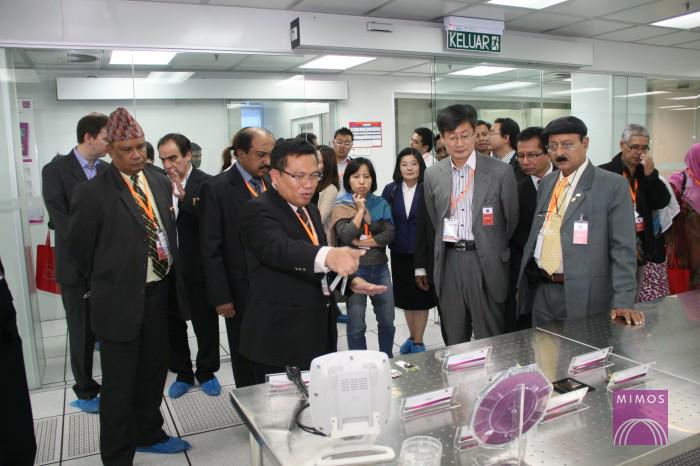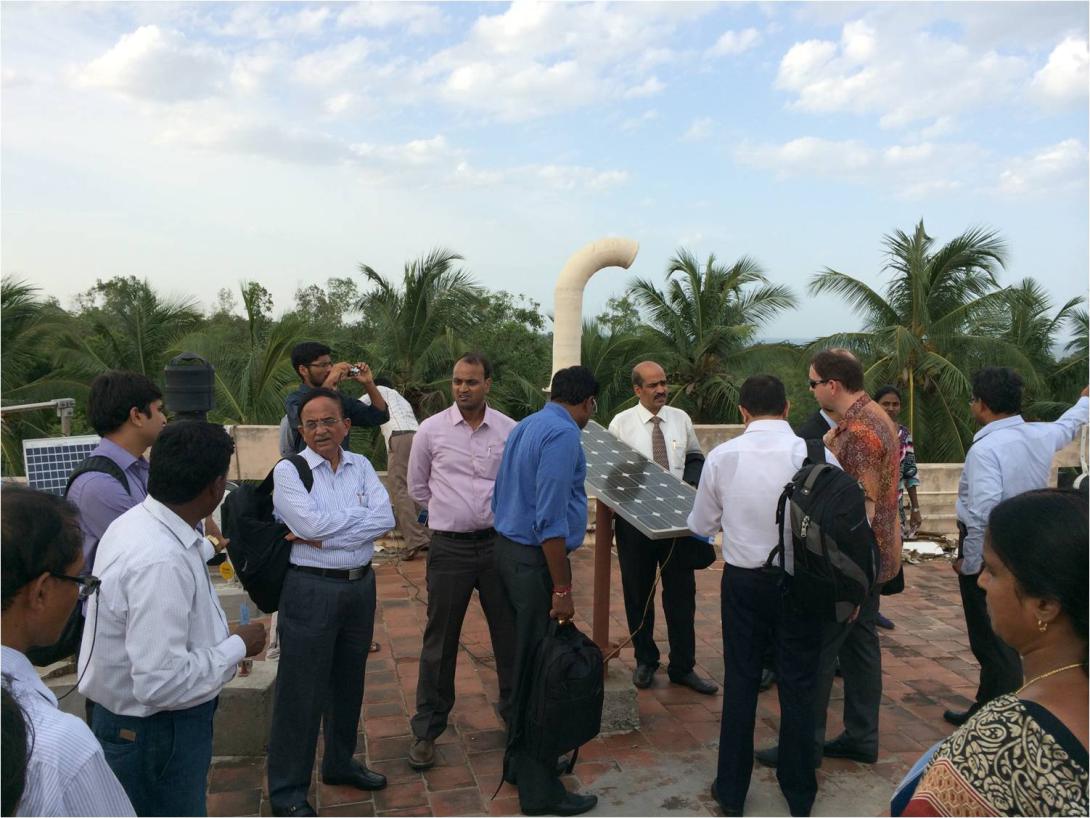Technology Sharing Transforms Asia-Pacific Region
The United Nations is running an Asia-Pacific technology transfer program that puts necessary capabilities in the hands of developing countries while improving international relations in the region. Efforts assist large and small states to harness the potential of technology to create a better future for their citizens.
Established in 1977 and headquartered in New Dehli, the Asian and Pacific Centre for Transfer of Technology (APCTT) is one of five regional institutions of the United Nations Economic and Social Commission for Asia and the Pacific (UN ESCAP). The center creates an enabling environment to assist the commission’s members by strengthening their capabilities to develop and manage national innovation systems; develop, transfer, adapt and apply technology; improve the terms of transfer of technology; and identify and promote the development and transfer of technologies relevant to the region. A total of 53 member states and nine associate members make up UN ESCAP and are part of the center. “The role for technology innovation in the Asia-Pacific region is quite enormous,” Michael Williamson, head of the APCTT, explains. Applications include the deterrence of climate change, food security, energy, sanitation and clean water. “For all of these challenges, we need new and innovative technologies,” Williamson says.
In 2013, the center developed a strategic plan with three main goals: science, technology and innovation (STI); technology transfer; and technology intelligence. The APCTT assists member countries by strengthening those fields, including by cooperating with small and medium enterprises that can help. The organization is not a technology hub but a resource to help countries manage the technology transfer process.
When center personnel conduct technical meetings and government councils, they have opportunities to interact with representatives of various nations on a face-to-face basis. The representatives also work together, fostering better relationships. Some areas of particular interest are renewable energy, both in terms of addressing climate change and energy security, and nanotechnology. “That’s been an interesting area because it’s in a real growth phase,” Williamson says. “It’s a cross-cutting technology platform that can provide solutions to many of the needs of society.” Nanotechnology affects medicine, materials and energy storage, among other fields. Various countries in the Asia-Pacific area are working on different energy and nanotechnology projects.
Since the explosion of technology during the Industrial Revolution, poor choices regarding its use have caused problems just as wise decisions have improved the world. Now, leaders can employ technology to address those environmental, social and other challenges. Furthermore, new and emerging technologies can support enterprises that create jobs, feed citizens and provide tax revenues to national governments. “All this leads to a sense of optimism for the future,” Williamson says. “We believe the future will be better than the past.”
In the last two years alone, the center has worked with about 25 member states and 40 agencies to deliver programs and transfer practices. Key project outputs include an online resource center in Indonesia and Nepal for managing each country’s national innovation system and an STI diagnosis and strategy development that helped Nepal and Lao People’s Democratic Republic (PDR) examine and strengthen their STI policies. In partnership with APCTT, the Science and Technology Policy Institute of Korea participated by sharing best practices in the target countries.
As part of another project, the center assisted Indonesia and Lao PDR with strategies to support affordable sustainable energy. The APCTT developed an assessment framework, surveyed existing policies, strategies and collaboration mechanisms among stakeholders and organized national consultation workshops. APCTT member countries and national experts shared their experiences and current approaches to promote affordable sustainable energy. Soumana Choulamany, director general, Department of Technology and Innovation, Ministry of Science and Technology in Lao PDR, explains. “The center’s mission is very important and valuable for the energy development sector in Lao PDR because it’s the priority of the government. However, the government is very concerned about sustainable energy development relating to protecting resources and the environment.” The exchange of experiences on policies, strategies and development projects is becoming a model for sustainable energy development in Lao PDR. When the final report comes out, Choulamany’s organization and his country’s government will review it to make improvements.
Officials from the APCTT worked with the European Union’s Network for Knowledge Transfer on Sustainable Agricultural Technologies and Improved Market Linkages in South and Southeast Asia, or SATNET, to establish a biological control unit. Agriculture is another key area of interest for member nations. The center helps other countries with sustainable agriculture. In one training effort, farmers in southern India learned how to gain market access in Iran through tracing technologies.
The APCTT has a number of online portals and resources to increase its reach and enable cooperation between nations. One focuses on technology transfer, where companies and countries can offer technologies for transfer or request particular capabilities they want to access. Another website is dedicated to nanotechnology information exchange, enabling nations to identify key players such as research and development institutions, researchers and enterprises for cross-country research collaboration and technology transfer. The renewable energy technology bank profiles approximately 60 proven renewable energy technologies, all ready for commercial transfer. In the center’s view, its principal clients are member-country governments. Personnel coordinate often through ministries and sometimes through other national institutions. Resources restrict much direct work with companies, which the center tries to do online instead.
The organization also has e-periodicals, including its flagship Asia-Pacific Tech Monitor, which started as a print publication in 1983. It features articles on technology trends and developments, technology policies, the technology market, innovation management, technology transfer and new products and processes. It also lists selected technology offers and requests from around the world. The Value Added Technology Information Service (VATIS) Update monitors and examines current innovations in biotechnology, food processing, nonconventional energy, ozone layer protection and waste management.
Complicating matters for the APCTT are challenges related to the size of the Asia-Pacific region and limited resources both of the center and its members. “We do try to maximize the impact we have on all countries,” Williamson explains. Requests for support are prioritized, and work that would benefit only one or two countries moves low on the list. “We have a principal of equity and balance,” he states.
The pace of technology innovation is another consideration, as the speed of disbursement at the grass-roots level continues to increase. Every country needs to understand how to apply technology’s benefits to its population, Williamson says. Most expenses for the APCTT’s work are met by the member countries. The center operates with about 10 staff members and an annual budget of approximately $1 million.
Differences in government and trade policies, and even political tensions, have not affected the center’s operations, according to its head. The center was founded at the request of the countries, so the programs offered are open to them all. Efforts assist the individual members with bettering their capacity but do not include the direct involvement of the APCTT in the transaction of individual technologies. Issues of technologies used for violent or oppressive purposes have not arisen.
Differences in resources and capability are another matter. “That’s really a signature feature of our operating environment,” Williamson says. “We consider this to be both a challenge and an opportunity.” The opportunity lies in bringing nations together on a common platform and using resources and capabilities to meet common objectives. In addition to North-South cooperation, South-South cooperation is an important model. South-South denotes developing countries helping each other; in the APCTT’s work, some of the least developed countries contribute. Nepal, for example, has developed its own microhydropower industry using locally developed technology. “No one country has a monopoly on innovation,” Williamson explains. South-South collaboration helps overcome difficulties such as when certain resources from a developed country might be too expensive or too sophisticated for a developing nation. The approach uses the combined resources and capabilities of developing countries to meet developmental challenges.
Nonetheless, the rise of countries such as China and India definitely influences activities. Combined, the two have a population of more than 2.5 billion people and have been supporters of APCTT efforts. Williamson says they are eager to share both capabilities and knowledge with other developing countries in the region, offering enormous scope for collaboration and regional capacity building. Increasing demands for energy and concerns of climate change are driving their new interest in renewable technologies. Projects are underway to increase the capacity of member countries to deploy such capabilities, and the center hopes India and China will play big roles.
India offers the greatest influence as the host of the APCTT. “Without their support, APCTT might not exist,” Williamson explains. India works closely with the center and supports its efforts in programs such as those working on national innovation systems in Laos and Nepal. The large nation also has a renewable energy technology bank profiling many of the technologies in the field. China, meanwhile, hosts the technical committee meeting this year, presenting opportunities for the center and member country governments to interact with government colleagues and industry stakeholders in the communist country.
The center does not work as an intermediary consulting agency to help with technology transfers, intellectual property issues or negotiations. Rather, it helps countries and their industries build those capacities themselves. The work and the independence affect local societies. “Without STI, the Asia-Pacific region can’t address its emerging sustainable development challenges,” Williamson says. “Nor can it fully deliver on the aspirations of its citizens.”
However, industry and academia still have roles to play. Strengthening national innovation systems will help reduce the “valley of death” between research and development and actually reaching the market. Small and medium enterprises, in particular, are key players in the technology transfer activities. The approach to academia is to tap into its expertise. The APCTT is developing a network of experts often called on by leading institutions, especially those with experience in South-South cooperation. The APCTT creates a knowledge hub with science and innovation. Developments can feed back to U.N. ESCAP and inform work there.
Marc Proksch, chief of business and development, ESCAP Trade and Investment Division, explains that the APCTT fills the needs of countries to upgrade technologies and procure capabilities for their development. “This is the only [program] that provides these kinds of services,” he says. Member states are reviewing now if they want to strengthen STI, which would strengthen the center. “The issue of technology transfer is very important for development, and the APCTT is the only organization in the region that does this.” He adds that the center does a good job despite its small staff and budget.
For ESCAP, a priority for any technology is sustainability. In the past that meant environmentally, but now the term includes economic and social dimensions. The center helps to meet that goal and helps countries learn from each other. Much of the work done involves training, which involves forging partnerships with various local organizations.






Comments